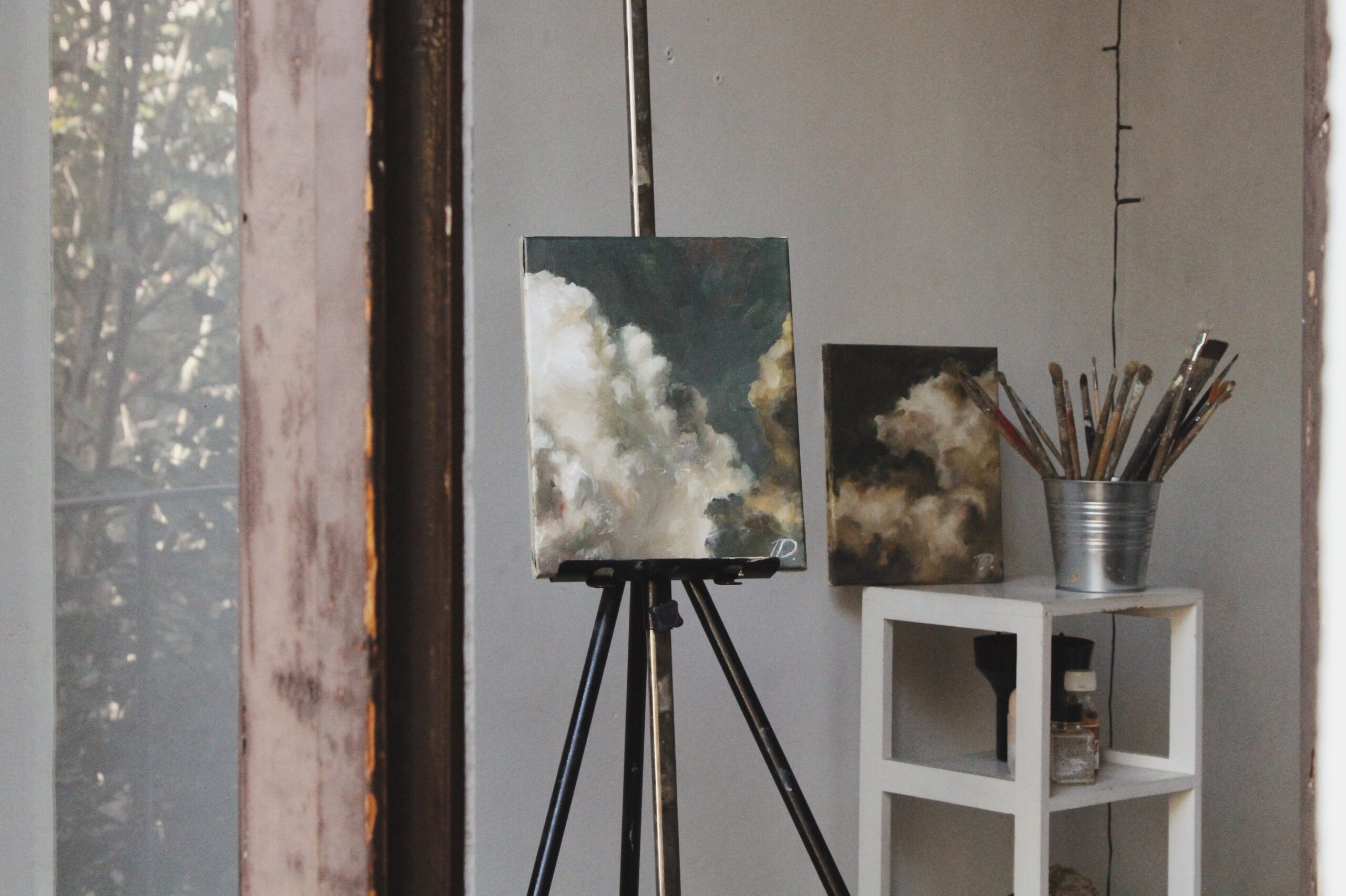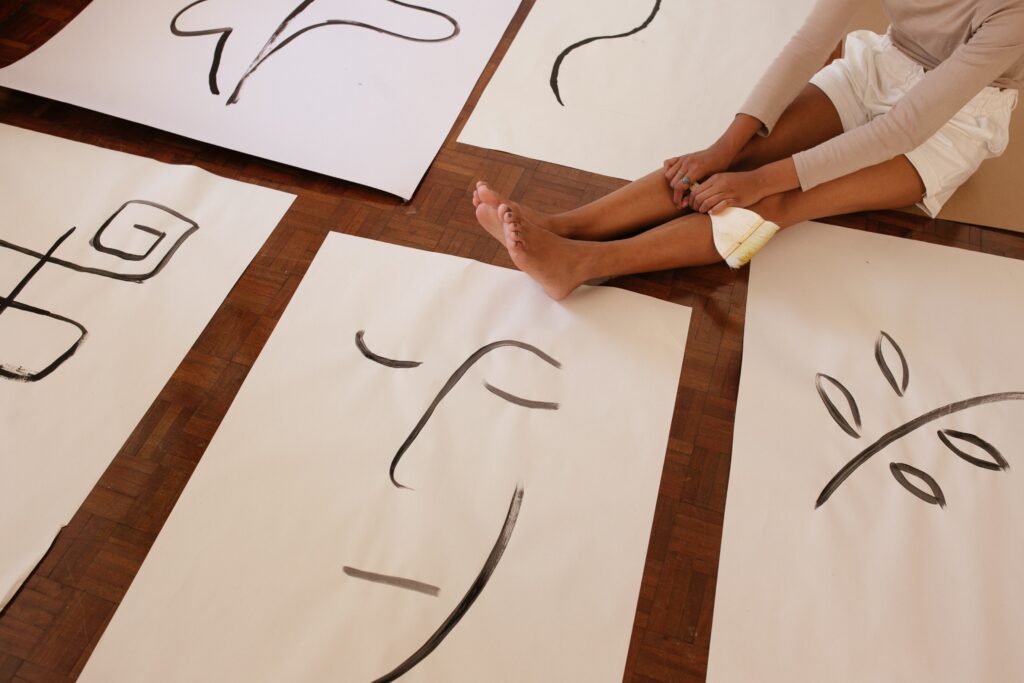BLUE LIGHT CARD DISCOUNTS available across all therapies and packages. Thank you NHS.
From Paintbrush to Piano: How Art Boosts Your Well-Being

In today’s fast-paced world, where stress and health challenges are part of daily life, creativity stands out as a powerful tool for improving our mental, emotional, and physical well-being. Whether we engage in artistic activities ourselves or experience the art created by others, both offer profound benefits for better health management, stress relief, emotional balance, and even better immune response. Providing a sanctuary where we can find solace, and much needed comfort, when navigating life’s trials and tribulations. For many, experiencing art or creating it is not merely an indulgence, but a vital and cherished element of a holistic approach to health.
The Power of Art
Art is much more than a form of expression; it’s a powerful tool for healing, connection, and learning. It has the unique ability to bridge divides – crossing language and cultural boundaries to create shared experiences that uplift the spirit, soothe the soul, and calm the mind. Whether through visual art, music, theatre, or film, it connects us on a deeper level as humans, providing a sense of communal belonging and emotional release. It teaches us valuable lessons, encourages empathy, and helps us process difficult emotions, making it a fundamental resource for navigating both personal and collective challenges. As we engage with creative work in all its forms, we tap into its vast therapeutic potential.
Connection Through Art
Art possesses a profound ability to unite us, weaving a universal language that transcends words and reaches directly into the heart of our shared humanity. It speaks to our emotions, offering a deep and often comforting understanding of one another. In moments of illness, joy, or hardship, art fosters communion, connecting us not only to each other but to ourselves and the deeper, ancestral currents of our being, linking us to a lineage that stretches far beyond the present moment. By creating or simply experiencing others creativity, we find solidarity – a reminder that we are never truly alone on this journey. Art dissolves the barriers between us, encouraging compassion, bridging divides, bringing catharsis to grief and nurturing meaningful connections that bind us across time and space.
Teaching Through Art
Art is a profound teacher, not only through its capacity to inspire but through its ability to expand the way we see the world and understand ourselves. Across all artistic mediums it compels us to think differently, to challenge our perceptions, and to approach the world with greater sympathy and insight. It nurtures skills like emotional intelligence and critical thinking, guiding us to examine both our own experiences and those of others with fresh eyes.
In the context of health, art becomes a powerful educator, offering a platform to illuminate important issues and raise awareness through both accessibility and impact. Whilst also creating an invitation for us to reflect on our individual and collective well-being, encouraging us to explore topics and make more informed, and benevolent decisions with a deeper understanding of the human experience.
Films and television shows – particularly those that explore health challenges or societal struggles – create space for difficult yet necessary discussions, opening our hearts and minds to topics we may otherwise overlook or misunderstand. Whether through documentaries that reveal the lived experiences of those facing particular challenges or fictional stories that explore personal and social battles, these mediums allow us to understand and empathise with others in profound ways. This increased understanding fosters social awareness, creating a ripple effect of empathy that moves through communities and, ultimately, sparks change. Through the lens of art, we are invited to grow—not only in knowledge but in kindness, compassion and the desire to make the world a better place.

Escapism Through Art
Creativity offers a refuge – a retreat where the mind can momentarily step away from the relentless pace of daily life or from whatever time of stress, grief or uncertainty you might be facing. Via the immersive worlds of film, the soothing melodies of music, the evocative stories within literature, or the vibrant strokes of a painting, art provides a space where reality softens, and the soul can find respite. In times of stress, grief, or uncertainty, escapism through art – both your own and others- becomes a lifeline for mental health. This form of escapism is not an act of avoidance, but a conscious haven that offers our hearts and minds the necessary stillness to heal, reflect, and replenish. It is within these spaces of artistic expression that we can temporarily untangle the complexities of our lives, allowing ourselves to be swept into a realm of peace, joy, and emotional release. And within those moments and through this emotional catharsis, we are gifted a renewed sense of perspective, a chance to move forward with our struggles, towards a hopeful place of calm and healing.
Healing Through Art
Art’s extraordinary power to heal lies in much of what has already been mentioned. It has a unique and profound ability to heal by providing a refuge in times of stress, grief, or trauma, and offering a pathway for emotional reflection and release. Be it through the act of painting, dancing to your favourite tune, the ritual of live music or the quiet comfort of a beloved book, in its therapeutic embrace, art nurtures our soul and self by weaving together the threads of connection, understanding and escapism, alongside the soaring spectrum of human emotion and experience.
Moreover, art serves as a powerful tool for healing in more tangible ways. For those who feel cut off from the world – whether due to illness, isolation, or personal struggles – art provides something meaningful to do with their time, giving a sense of purpose and connection. It also offers a profound way for individuals to express their innermost thoughts, feelings, and experiences, helping them feel truly seen and heard. The act of creating allows people to give voice to their emotions and personal stories, facilitating both a sense of achievement and validation. This acknowledgment, both from within and from others, is a powerful step in the healing process, as it affirms our experiences and nurtures emotional well-being.
Yet the healing power of art isn’t just about the poetics – it’s grounded in well documented science.
The Science behind Art Therapy
Research shows that engaging with art, whether through music, painting, or other forms of creative expression, significantly reduces cortisol levels – something that’s incredibly important when it comes to supporting our immune health. Since chronic stress and cortisol can both suppress immune function and drive system reactivity, reducing cortisol is a critical factor in maintaining a strong and balanced immune system, with healthy tolerance to potential triggers.
In the field of neuroaesthetics, which explores how the brain responds to art, research has shown that both observing and creating art activates the brain’s reward systems, causing the release of dopamine and endorphins, stimulating areas of the brain associated with pleasure, creativity, and emotional regulation, creating a sense of calm and reinforcing positive neurological pathways. For individuals suffering from conditions such as anxiety, depression, or PTSD, these neurological responses offer a much-needed outlet for emotional release and healing. Art therapy has proven to be a powerful intervention for PTSD, offering a non-verbal means of processing trauma. Through creative expression, individuals can explore their emotions, gain insight into their experiences, and gradually integrate difficult memories without the need for traditional verbal therapy. This process allows for emotional catharsis, helping to reduce the symptoms of PTSD such as hyper-arousal, anxiety, and intrusive memories. The act of creating something tangible from intense emotional pain can be a deeply transformative experience, facilitating recovery and providing a sense of control over one’s narrative and trauma recovery.
Studies in cognitive memory also highlight the impact of art on conditions such as dementia and Alzheimer’s disease. Art therapy has been shown to improve cognitive function and memory retention in individuals with dementia, helping them reconnect with their memories and express emotions that may be otherwise difficult to articulate. By engaging with art, individuals with cognitive decline can experience a reduction in anxiety, enhanced communication, and a renewed sense of self-worth, promoting a more positive quality of life.
Modalities of Art and Their Strengths in Society
Visual Art:
Painting, drawing, sculpture – visual art is a powerful way to express our emotions and tell stories. Art therapy, in particular, gives people a way to explore their feelings and manage stress in a creative, healing way.
Music:
Music has a special connection to the brain, especially in how it influences our emotions. It can help lower blood pressure, reduce stress, and uplift our mood. Music therapy is widely used for its ability to ease anxiety and promote relaxation.
Theatre:
Theatre brings people together through shared stories. Whether it’s watching or participating in performances, theatre helps us understand different experiences and emotions. Drama therapy, where people use role-play to explore emotions, is especially effective in reducing stress and promoting emotional health.
Dance:
Dance therapy is all about using movement to express emotions and relieve stress. It helps people feel more in tune with their bodies and can improve mood and emotional regulation, which in turn supports physical health.
Literature and Poetry:
Writing and reading can be incredibly therapeutic. Literature allows us to process our feelings and experiences, especially when we see our struggles reflected in stories or poetry. It gives us the space to reflect, heal, and grow.
Television and Film:
Television and film have become integral to modern life, offering both entertainment and education. Films, documentaries, and TV series allow us to explore emotions, experiences, and health issues in a way that feels personal yet universally relatable. By presenting real-world issues through compelling narratives, they can promote empathy, spark conversation, and help people cope with their own struggles. Certain films or TV shows, especially those that deal with themes of resilience or recovery, can be deeply cathartic. For many, seeing a character go through a similar struggle can provide reassurance and hope. It’s a reminder that we’re not alone in our journey, and that healing is possible. The visual nature of TV and film allows for an emotional engagement that often feels more immediate and immersive than other art forms.
Art’s Embrace
Art is a gift. It connects us, teaches us, and heals us, providing a sanctuary of solace and strength into which we can retreat, reflect, and recharge. Whether it be taking us away for a moment in time, showing us a pathway forward, giving us clarity and perspective when we need it most, or simply providing a container to occupy and support ourselves with, the possibilities it presents for us to explore, express, and transform are endless. Through art, we find not only escape but renewal, and in its embrace, we discover the power to navigate life’s challenges with a little more grace and a lot more hope- individually and as a collective.
So Happy Art Day everyone. Embrace and stand up for creativity – both your own and others – always.